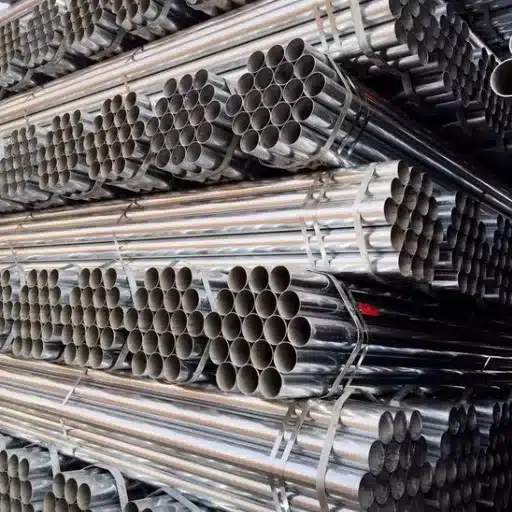When choosing a metal for different use cases, titanium and stainless steel tend to spark the most debate. It is no surprise that these metals are popular options in the aerospace, medical, construction, and consumer goods industries; both titanium and stainless steel have remarkable properties. Their differences regarding strength, weight, corrosion resistance, cost, and performance in specific conditions are often the deciding factors in the choice between titanium and stainless steel. This article will delve into a comparative analysis of these two metals, detailing their advantages and limitations, so that you can make an informed decision on which metal is best suited for your requirements.
What Are The Key Differences Between Titanium And Stainless Steel?
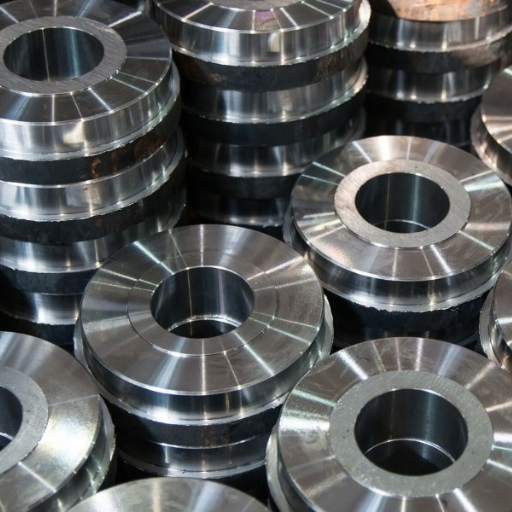
Repositories of metals differ fundamentally in their characteristics and applications. For instance, titanium is famous because of its unusually high strength-to-weight ratio, its corrosion resistance, and unsurpassed biocompatibility, which make it suitable for use in aerospace, medical, and marine industries. On the other hand, its manufacturing is quite expensive and laborious. Stainless steel, in contrast, is less expensive and much more versatile in its application as it is widely used in construction, automotive, and consumer goods. While it’s true that stainless steel is heavier than titanium, its excellent strength and durability comparatively provide one with greater cost efficiency. One’s choice between the two would depend on the particular needs of the application, such as weight restrictions, environmental conditions, and financial allowance.
Comparing Mechanical Properties Of Titanium And Stainless Steel
The choice of using titanium or stainless steel rests on the specifications of each particular undertaking. Titanium is ideal for applications where strength and lightweight are of foremost concern, for example, in aerospace and other high-performance uses, with its amazing strength-to-weight ratio. Nevertheless, it is important to consider its much higher cost. On the other hand, stainless steel, while more expensive, offers superb versatility and durability for both structural and environmental uses, withstanding corrosion while maintaining structural integrity. Its cost alone is a good reason for its almost ubiquitous use, even though it is heavier. Each one of these materials has its advantages, and how one utilizes them is largely dictated by the performance requirements and financial resources of the project.
Weight Reduction: Why Titanium Is Lighter Than Stainless Steel
The lower density of titanium compared to stainless steel is the primary reason behind the difference in their weights. While stainless steel has an approximate density of 8.0 g/cm³, titanium boasts a density of just 4.5 g/cm³. This means that for the same strength as offered by stainless steel, titanium, which is lighter, is more suited for uses where weight is a limiting factor—these include aerospace, automotive, and sporting goods industries.
Tensile Strength Comparison: Is Titanium Stronger Than Steel?
both titanium and stainless steel possess commendable tensile strengths, although their uses differ according to certain needs. The alloys of titanium, for instance, have a great strength-to-weight ratio, which makes them ideal candidates in instances where each ounce counts. On the other hand, stainless steel is easier to work with and has greater absolute tensile strength, which is beneficial in areas where structural strength and robustness are required. Regardless of these differences, it is best to consider the balance between strength, weight, corrosion resistance, and other factors, which, as I have witnessed, are crucial in deciding the material for different projects.
How Do Titanium Alloys Compare To Stainless Steel Grades?
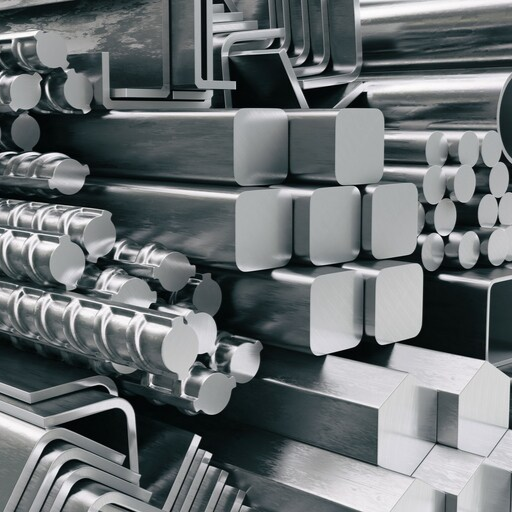
Whether it be Titanium alloys or different grades of stainless steel, it boils down to which of the two suits the purpose best. Offering excellent resistance to corrosion, titanium alloys are also greatly applicable in the aerospace, medical, and marine industries for what is arguably their most impressive quality – lightweight. Contrastingly, other grades of stainless steel are more applicable in construction and industry because of their added strength, lower cost, and less concern with weight. Both materials have their specific environments where they excel, and it is prudent to devise the most optimal decision based on the project at hand.
Commercially Pure Titanium Vs 304 Stainless Steel
With regards to my pondering on the comparison between Commercially Pure Titanium and 304 Stainless Steel, the starting point for my reasoning is usually the application in question. Each material possesses some positive factors, and knowing the most important aspects would be useful in making a decision. This is what my analysis looks like:
- Weight: When compared to 304 Stainless Steel, Titanium is much lighter, which benefits the aerospace and medical device industries where weight is critical. It is also less dense than stainless steel, which means you need less material to achieve comparable strength.
- Strength-to-Weight Ratio: Titanium has the best ratio of strength to weight, which makes it the ideal choice if you are looking for strength and efficiency in weight. On the other hand, stainless steel, albeit strong, is much heavier. This is a disadvantage in projects where weight matters.
- Corrosion Resistance: Both metals are highly resistant to corrosion, but titanium takes the lead in more extreme environments. For example, in marine and chemical applications, titanium can bear severe corrosion, which would eventually compromise stainless steel.
- Cost: 304 Stainless Steel is far more cost-effective and readily available. Considering budget constraints, if the project is not sensitive to weight but needs stainless steel’s durability, then it becomes a better choice.
- Temperature Resistance: While both materials are ideal for high-temperature applications, titanium’s property retention at high temperatures gives it an edge over jet engines and industrial furnaces.
- Application-Specific Needs: Apart from these basic parameters, it is imperative to consider the particular environment along with the functional needs. For instance, titanium’s non-magnetic properties along with biocompatibility make it useful for medical implants, whereas stainless steel is outstanding for applications which require weldability, and ease of fabrication.
In the end, I advise examining closely the specified particulars of the project. If the project requires low weight, resistance to corrosion, and superior performance in demanding environments, then titanium is often the material of choice. But for most applications where cost effectiveness and versatility in marginally demanding environments are essential, 304 Stainless Steel remains a dependable and practical option.
Titanium Grade Options Vs Austenitic Stainless Steel Types
When it comes to Titanium Grades vs. Austenitic Stainless Steel types, the decision is primarily dictated by the use case. Titanium grades optimized for aerospace applications, medical, and marine uses, such as Grade 2 and Grade 5, achieve superior lightweight construction, corrosion resistance, and superior strength-to-weight ratios. Austenitic Stainless Steels, such as 304 and 316, are also easily welded and possess good corrosion resistance at a relatively low cost, making them appropriate for general industrial, architectural, and food processing applications. In the end, the answer to which material to choose is contingent upon particular project details such as situational factors, available financial resources, and required outcomes.
Properties Of Titanium Alloys Vs Martensitic And Duplex Stainless Steels
I have observed that titanium alloys are virtually unparalleled for their remarkable strength-to-weight ratio, as well as their durability in extreme environments. Because of these attributes, aerospace and medical industries, where weight and durability are critical, utilize these alloys extensively. Stainless steel is mostly appreciated for martensitic grades due to their impressive hardness and exceptional wear characteristics; therefore, they are heavily utilized for tools and machinery that operate under high mechanical stress. Duplex grade stainless steels achieve both superior strength and corrosion resistance while being economical, making them widely used in marine and chemical processing industries. The decision regarding these materials is mainly influenced by the operational parameters of the project, cost factors, and environmental difficulties posed by the project.
What Are The Pros And Cons Of Titanium Vs Stainless Steel?
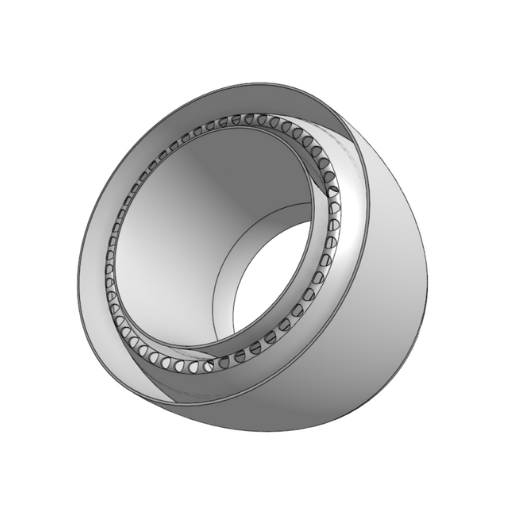
The applications for titanium comprise aerospace, medical, and marine industries due to its astonishing strength-to-weight ratio, excellent corrosion resistance, and biocompatibility. This is unlike other materials, however, titanium is much more expensive, in addition to having less wear-resistant qualities than stainless steel. On the other hand, stainless steel, while not as expensive, is exceptionally durable and shows greater hardness and wear resistance, making it suitable for heavy-duty applications. Corrosion in extreme conditions is one of the main issues from which stainless steel suffers, however, this is dependent on the grade of stainless steel used. Whichever is selected is reliant on the specific needs concerning strength, weight, cost, and environmental exposure.
Why Titanium Is Generally More Expensive Than Stainless Steel
The cost of titanium is relatively high as compared to stainless steel due to its specific attributes and the complicated production methods. For instance, titanium has an unbelievably superlative strength-to-weight ratio, unparalleled corrosion resistance, and biocompatibility, as a result of which it is indispensable in high-performance aerospace applications, medical implants, and marine engineering. Furthermore, obtaining titanium from its ore is comparably more difficult than obtaining stainless steel because it is more energy-intensive and requires more costly processing techniques. In addition, titanium is challenging to machine, and therefore, having the needed skills increases the cost. On the other hand, aluminum remains the most cost-efficient and economic material. Yet, due to titanium being extraordinarily advantageous in critical applications, it justifies the higher price.
Corrosion Resistance: Stainless Steel Vs Pure Titanium
I’ll approach the comparison of the corrosion resistance of stainless steel and pure titanium piece by piece. Each material is remarkable in its own regard, and there is no definitively correct choice; it all depends on the application. Here’s a breakdown:
- Resistance to General Corrosion
The presence of oxygen in the environment makes pure titanium almost immune to corrosion because it forms a strong, thin oxide layer that prevents corrosion. This is not the case with Stainless Steel. As long as there is a reasonable amount of oxygen in the atmosphere, stainless steel does not suffer from corrosion because chromium in its mixture provides some degree of protective oxide layer. While Stainless Steel does suffer from some general corrosion, the amount of damage suffered in the presence of acidic environments or chloride blends is much larger than compared of Titanium.
- Chloride Pitting and Crevice Corrosion Resistance
As far as saline ecosystems are concerned, titanium alloys are your go-to titanium is superior for these situations. The same cannot be said for stainless steel which often uses cross-sectioned steel grades. With the presence of chloride, stronger case of pitting along with crevice corrosion is observed at the same time. This does not suffer on long itime titanium as water remains indresible even in dire contexts.
- Cost of Maintenance and Durability
Initially, rates can be observed to be lower for stainless steel compared to other materials, over a distance of time and aggressive marine conditions, spending on protection against corrosion, wear on other parts and upkeep creates a hefty sum. Its capability to hold on when corrosion is concerned and tiatium’s frequent level of endurance does give it distinction in price, needing secondary maintenance.
- Weight and Corrosion Performance Balance
Compared to stainless steel, titanium has a much higher strength-to-weight ratio. If the design a lightweight, yet withstands harsh corrosive conditions, titanium is preferable.
In conclusion, the choice of stainless steel or pure titanium for corrosion resistance relies on your application requirements. For most purposes, particularly where there isn’t too much aggression, stainless steel remains an economical choice with good functionality. However, in extremely aggressive environments or those containing chlorides, titanium’s superior resistance to corrosion, coupled with low maintenance costs, justifies the investment. Ultimately, having knowledge of the conditions that the material will be subjected to is crucial for optimally selecting the material.
Strength And Weight Advantages: When Each Metal Excels
As of note, titanium possesses remarkable strength-to-weight properties, which makes it ideal in the aerospace and medical industry, as high durability with lower weight is a requirement. Stainless steel provides a greater overall yield strength coupled with more stiffness; however, a greater cost will be incurred. This allows for construction and general manufacturing to utilize this asset without concern for weight. Understanding and balancing the cost, weight, and strength of your project will determine the selection best suited for your use.
When Should You Choose Titanium Over Stainless Steel?
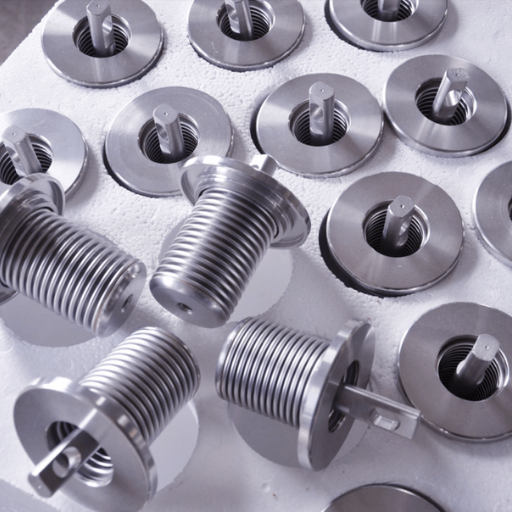
For projects needing lightweight and exceptionally durable materials that can endure harsh environments, I advise using titanium instead of stainless steel. Its high strength-to-weight ratio enables its use in aerospace, marine equipment, and medical implants where weight is critical, but performance cannot be compromised. Further, its unmatched ability to resist corrosive elements and high temperatures makes it reliable in harsh conditions. While titanium does come at a higher price, its advantages make it worth it for top-tier applications. Always assess your project priorities before making decisions.
Applications Where High Strength-To-Weight Ratio Matters
The aerospace industry, automotive engineering, sports, and medicine rely on titanium owing to its strength-to-weight ratio. Ti alloys are vital in fields where outstanding weight-to-strength ratios and fatigue characteristics are required. Such applications require materials with minimal weight, tailored towards optimum performance, efficiency, and outcome, but maximum durability.
When The Unique Properties Of Titanium Justify The Cost
the distinct features of titanium warrant its price in circumstances when performance, lifespan, and specific needs take precedence over expenses. When some conditions are critical, titanium provides advantages that go beyond the capabilities of what ordinary materials can offer. This is my take on it:
- Strength-To-Weight Ratio: Titanium holds an unparalleled position for strength-to-weight ratio, which makes it valuable in the aerospace field because lifting any weight is fuel-intensive, and effort must not sacrifice the structural integrity of the craft.
- Corrosion Resistance: Titanium does not succumb metals’ corrosion from water, chemicals, and saline/acidic atmosphere. These properties make titanium fit for marine parts, equipments for chemical processes, and reliable and long-lasting medical implants.
- Biocompatibility: Medical devices such as joint prostheses or dental implants can optimally be made with titanium since it is less likely to cause body rejection or negative response due to foreign materials.
- Durability Under Stress: Due to its utilization in manufacturing jet engines, turbines and parts of spacecrafts, titanium is expected to be under severe external forces like elevated pressure and temperature.
- Longevity and Life Cycle Cost: The sham cost of titanium means less expense in the long run as its lifespan and service period are higher in resistance compared to others, where exposure-prone materials are employed.
To put it concisely, titanium pays off in every context where these parameters matter to the project’s success and efficiency. Its high-end features make it suitable for demanding applications, even where performance comes at a premium.
Which Industries Prefer Stainless Steel Over Titanium?
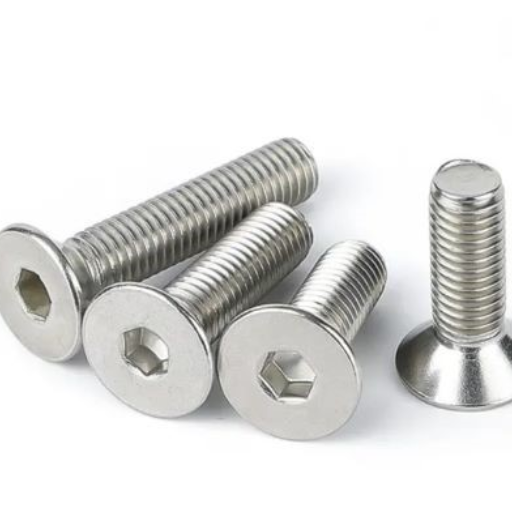
Food processing, construction, and automotive industries, which value durability and corrosion resistance, often prefer stainless steel to titanium due to its cost-effectiveness and ease of fabrication. In these industries, the extreme strength-to-weight ratio and high-temperature performance of titanium are not essential.
Why Stainless Steel Is Widely Used In Food Processing
Stainless steel has proven to be very hygienic, durable, and corrosion resistant, attributes which make it very popular with food processors. From my experience, the hygienic aspect is highlighted by the lack of pores in the material, which makes cleaning considerably easier, thus enabling the stainless steel to meet strict food safety standards. Also, even when in contact with strongly acidic foods or cleaning agents, stainless steel does not corrode, aiding in the preservation of the food’s quality and safety. Its durability also means longer equipment life and reduced maintenance costs, which are significant factors in the industry.
Applications Where Stainless Steel Has a Good Performance-To-Cost Ratio
The use of stainless steel in food processing equipment, kitchen tools, chemical processing plants, and medical machinery showcases its economic value. Due to its corrosion resistance and durability, it remains a cost-effective choice for industry grade steel, which needs to be hygienically clean. Moreover, its Versatility in different industries is supported by its extreme temperature and chemical resistance.
How Do Titanium And Stainless Steel Compare In Durability?
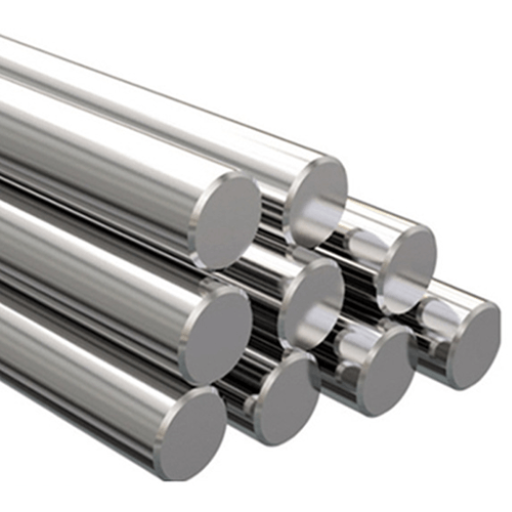
Regarding durability, titanium and stainless steel both excel, but stand out in different areas. My experience informs me that titanium has an unparalleled strength-to-weight ratio and is nearly immune to corrosion, which makes it suitable for aerospace, medical implants, and marine applications. Meanwhile, stainless steel is extremely tough, has high wear resistance, and is outstanding in cases where impact and abrasion resistance are required, such as in industrial machinery or construction. The decision comes down to the particular durability needs of your project.
Differences Between Titanium And Stainless Steel In Marine Environments
Titanium surpasses stainless-steel-grade metals in marine settings because of its superior corrosion resistance in extreme salt and hostile environments. Although stainless steel is strong and tough, its resistance to corrosion made it more susceptible to damage over a period of time due to seawater exposure. The lightweight characteristics of titanium together with its remarkable corrosion resistance by saltwater makes titanium the ideal candidate for long-term marine use applications where endurance and versatility are essential.
High Temperature Performance: Titanium Vs Stainless Steel
Stress conditions of titanium materials are always underscored in conjunction with high temperatures and I have encountered demanding applications within such boundaries. Stainess steel does not hold its strength and structural integrity while titanium retains its strength superior to stainless steel at elevated temperatures. Be it automobiles, aircrafts or industrial equipment, titanium stands ideal. Despite the fact that during prolonged periods of being subjected to high temperatures, stainless steel weakens and loses its mechanical properties, titanium proves superior owing to its resistance to thermal expansion and stability.
Long-Term Wear Comparison Between The Two Metals
In relation to stainless steel, titanium puts out greater performance in the context of long-term wear due to its remarkable strength-to-weight ratio, corrosion resistance, and fatigue resistance. While experiencing wear in application, stainless steel is more likely than titanium to wear down or degrade in rugged environments. On the other hand, titanium withstands the rigors of corrosive and high-stress conditions, thus restoring superior longevity in applications where prolonged durability and reliability are of paramount importance.”
Reference
- Titanium vs. Stainless Steel: Choosing the Right Material – A detailed comparison of key differences, physical properties, applications, and environmental impact.
- The Difference between Titanium vs Steel? – Insights into fabrication, machining, and production cost differences.
- Titanium Steel vs Stainless Steel: Know the Difference – A breakdown of weight, corrosion resistance, heat handling, and affordability.
Frequently Asked Questions (FAQs)
Q: What is the difference between stainless steel and titanium?
A: The fundamental difference is that titanium is an element, while stainless steel is an alloy composed of iron, carbon, and at least 10.5% chromium. Titanium is known for its exceptional strength-to-weight ratio, being 45% lighter than steel while maintaining high strength. Stainless steel offers excellent corrosion resistance, durability, and is generally more affordable than titanium. Their different atomic structures give them distinct properties, making them suitable for different applications depending on whether weight, cost, or specific performance characteristics are prioritized.
Q: Is titanium stronger than stainless steel?
A: Yes, titanium is stronger than stainless steel when comparing strength-to-weight ratio. Pure titanium has a tensile strength similar to many steel alloys but weighs about 45% less. Titanium alloys have excellent strength properties, with some grades reaching tensile strengths of up to 170,000 psi. However, some high-grade stainless steel alloys can achieve greater absolute strength than titanium. The strength of titanium makes it ideal for aerospace applications, while the strength of stainless steel is sufficient for most commercial and industrial uses where weight is less critical.
Q: When should I use stainless steel instead of titanium?
A: You should use stainless steel when cost is a significant factor, as it’s considerably cheaper than titanium. Stainless steel is often preferred for applications requiring heat resistance (up to 1700°F compared to titanium’s 1000°F), magnetic properties (austenitic stainless steel is non-magnetic), or when greater hardness is needed. It’s also better for applications requiring welding or fabrication, as steel is easier to work with. Common applications include kitchen appliances, surgical instruments, automotive parts, and construction where titanium’s lightweight properties aren’t essential.
Q: What makes titanium better than stainless steel for certain applications?
A: Titanium is better than stainless steel in applications where weight reduction is critical, such as aerospace and high-performance sports equipment. Titanium is highly corrosion-resistant, even in saltwater environments where many stainless steels would fail. Additionally, titanium is biocompatible, making it ideal for medical implants with minimal rejection risk. Titanium may also be preferred for its high crack resistance, excellent fatigue strength, and superior strength-to-weight ratio. These properties make titanium the superior choice despite its higher cost when these specific attributes are required.
Q: How do titanium and steel compare in terms of corrosion resistance?
A: Both titanium and steel have excellent corrosion resistance, but titanium is superior. Titanium naturally forms a stable, continuous, highly adherent protective oxide film that immediately reforms if damaged. This makes it extremely resistant to corrosion in seawater, acids, and chlorides. Stainless steel is also corrosion-resistant due to its chromium content, which forms a passive layer, but it’s more susceptible to pitting and crevice corrosion in harsh environments. While high-grade stainless steel alloys offer good corrosion protection, they generally can’t match titanium’s performance in aggressive environments like saltwater or chemical processing applications.
Q: What is the price difference when choosing between titanium and stainless steel?
A: When choosing between titanium and stainless steel, cost is often a decisive factor. Titanium is typically 3-5 times more expensive than stainless steel due to its more complex extraction and processing requirements. For example, a titanium component might cost $25-30 per pound compared to stainless steel at $5-7 per pound. This significant price difference makes stainless steel the economical choice for many applications where the superior properties of titanium aren’t essential. Additionally, manufacturing costs are higher for titanium due to its harder machining characteristics, further increasing the overall price gap between these metals.
Q: How do titanium and carbon steel differ in performance?
A: Titanium and carbon steel represent opposite ends of the performance spectrum. Titanium offers exceptional corrosion resistance, a high strength-to-weight ratio, and biocompatibility, but at a premium price. Carbon steel, which contains iron with 0.12-2.0% carbon, provides high strength and hardness but is highly susceptible to corrosion without protective coatings. Unlike stainless steel and titanium, carbon steel will rust quickly when exposed to moisture. Titanium is about 45% lighter than carbon steel while offering comparable or superior strength. However, carbon steel is significantly more affordable and easier to work with for manufacturing processes like welding and machining.
Q: Why is titanium biocompatible and preferred for medical implants over stainless steel?
A: Titanium is biocompatible because it’s chemically inert and doesn’t trigger immune responses or rejection when implanted in the human body. The body tolerates titanium exceptionally well compared to other metals, including stainless steel. While medical-grade stainless steel is also used for implants, titanium is preferred for long-term implants because it osseointegrates—forms a direct structural and functional connection with bone. Additionally, titanium is non-ferromagnetic, making it safe for patients who may need MRI scans. The lightweight nature of titanium also makes it more comfortable for patients with large implants, though its higher cost means stainless steel remains common for temporary implants and surgical instruments.
Q: What are the environmental considerations when choosing between titanium and stainless steel?
A: Environmental considerations include both production impact and recyclability. Titanium extraction and processing require significantly more energy than stainless steel, resulting in a larger carbon footprint during production. However, titanium’s exceptional durability and longer service life can offset this initial environmental cost. Both metals are 100% recyclable, but stainless steel has a more established recycling infrastructure. Stainless steel is often produced with a high percentage of recycled content (up to 60%), while recycled titanium is less common in new production. Titanium may offer environmental advantages in applications where its lightweight properties result in energy savings, such as in aerospace and automotive uses where reduced weight translates to lower fuel consumption.






